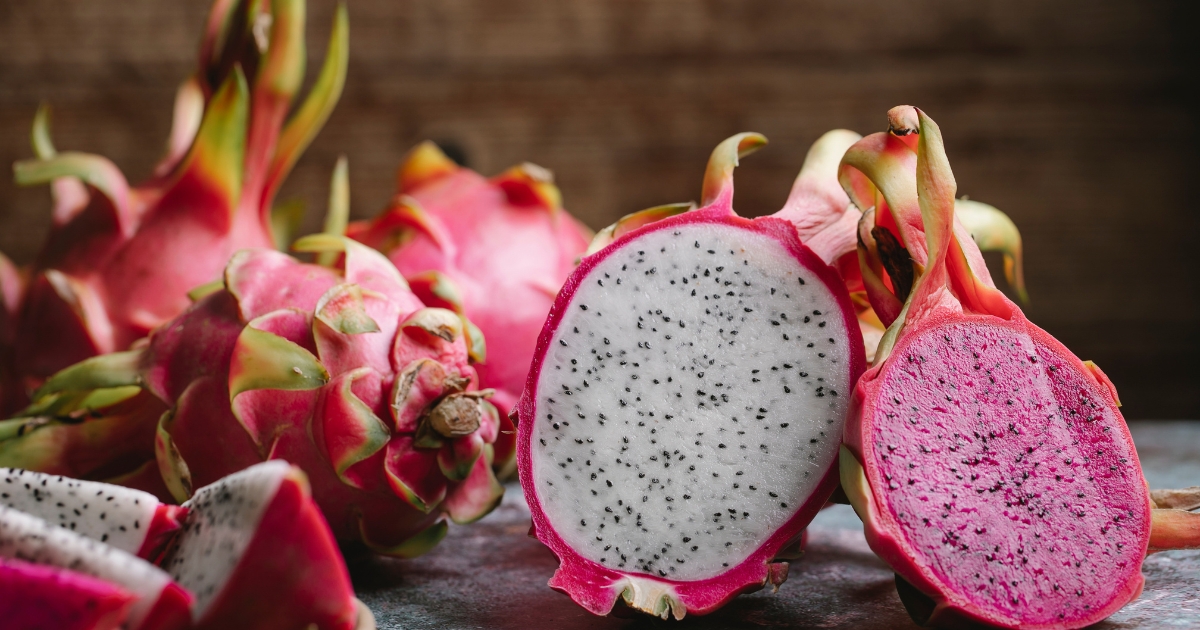Dragon fruit is a popular cactus plant due to its exotic appearance and health benefits. Citizens worldwide value this fruit because it is rich in vitamins. Elements such as season, climate, cultural practices, accessibility to water, transport, handling, and storage can affect the bioactive compounds of dragon fruits. This fruit is a great crop to plant for Mediterranean farmers because it does not need much water and thrives in high temperatures. During the ripening process, the color of red-fleshed dragon fruits becomes pigmented. It contains natural sugars and antioxidants such as Betalains, Hydroxycinnamates, and Flavonoids.
Origins of Dragon Fruit
Dragon fruit originated from the tropical and subtropical regions of Mexico, Central and South America. Then, it spread to Australia, Cambodia, China, Israel, Japan, Nicaragua, Peru, the Philippines, Spain, Sri Lanka, Taiwan, Thailand, the Southwestern United States, and Vietnam. Dragon fruit is quickly becoming popular because of its health and economic benefits. The fruit is recognized as a source of functional materials abundant in phytochemicals with potent antioxidant properties.[1]
From Niche to Nationwide: Dragon Fruit's Rise in Bangladesh
Dragon fruit is quickly becoming popular because of its health and economic benefits; it is recognized as a source of functional materials that are abundant in phytochemicals with strong antioxidant properties.[3] Recently, factors such as climate, high levels of sunlight, seasonal rainfall, and soil type led to the agriculture of dragon fruits in various parts of Bangladesh. Research on dragon fruit began at universities like the BARI (Bangladesh Agricultural Research Institute) and BAU (Germplasm Center of Bangladesh Agricultural University). Despite its cultivation and expansion, there is not enough information available on the production aspects of dragon fruit.

Health Benefits of Dragon Fruit
Dragon fruit is nutritious and abundant in vitamins, minerals, complex carbohydrates, dietary fibers, and antioxidants. Findings revealed that dragon fruit aids in the growth of healthy gut bacteria and contains Betacyanin[6], a red or purple pigment with antioxidative properties.
Here's why you should consider adding dragon fruit to your diet:
Gut Health Hero: Dragon fruit helps good bacteria thrive in your gut. It contains betacyanin, a powerful antioxidant with a vibrant red or purple color, and prebiotics (like polysaccharides and oligosaccharides) that act as food for beneficial bacteria like Lactobacilli and Bifidobacteria[2]. These prebiotics keep your gut healthy by crowding out bad bacteria.[2]
Heart-Healthy Choice: Dragon fruit is low in calories and cholesterol-free, making it a smart choice for heart health. It may even help reduce the risk of heart disease and high blood pressure.[3]
Other Health Benefits:
- Enhances the healing process of wounds and cuts[3]
- Improves appetite and vision[3]
- Possesses properties that slow down aging[1]
- Have a positive impact on metabolism
- Improves outcomes on diabetes and heart health [5]
- Inhibits the growth of various cancer cells[7]

This exotic fruit isn't just visually stunning – the flower is used medicinally, and the stem aids blood circulation.[1] But the true treasure lies within. Dragon fruit boasts vitamin C, phosphorous, calcium, and fiber. It may even help prevent or control asthma[4], and contains iron which increases hemoglobin and red blood cell levels.














